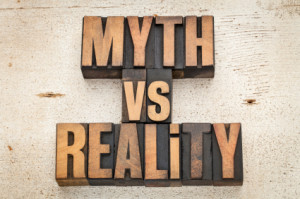by gabriel_sales | Jun 5, 2013
 This is Part 2 of a 4-part blog series discussing the need for expert solutions for B2B sales and marketing in 2013. For Part 1, please click here.
This is Part 2 of a 4-part blog series discussing the need for expert solutions for B2B sales and marketing in 2013. For Part 1, please click here.
In the last blog, we explained that for B2B sales in 2013, buyers have control of the buying process and want to ‘particpate’ in every step of the sales cycle.
What all of this translates to for the B2B sales world is that your stellar salesmen are no longer enough to consistently close deals. When the buyer feels like he is in control; he is not about to let some smooth-talking stranger tell him what to do. He may end up making the same buying decision your salesman wants him to, but he wants to feel that he has been an active participant in reaching that decision.
So, how do you appease the buyer and let him revel in his newfound sense of buying power? You build a sales engine with digital content marketing and let the buyer interact with you digitally until he/she is ready to be sold to directly.
Because the new communication model is about participation rather than transmission, you need to build digital content that buyers can engage or “participate” in. Give prospects the value proposition they need to make an informed decision, but don’t be overtly sales-y about it. Give them educational blogs to read, quick videos to watch or invite them to attend live webinars.
By having participatory experiences with your brand, prospects will start to feel comfortable enough with you to actually want to be sold to. If you use a marketing automation platform along with a strategic content marketing campaign, the buyer’s digital behaviors will let you will know when to start selling.
For Part 3 of this blog series, please click here.
If you have any questions or would like to speak to a B2B sales and marketing outsourcing representative, please feel free to contact us.
by gabriel_sales | Jun 1, 2013
 The changing world of B2b sales
The changing world of B2b sales
In B2b sales in 2013, many companies are starting to catch on to the fact that sales and marketing have changed. Dramatically. This is mostly due to technological innovations that have severely altered the way we receive and interact with information.
In this four-part blog series, we explain how the ways we buy and sell things have changed and why it is no longer easy or effective to sell without the help of experts.
Throughout human history, we have seen time and time again that technological innovation changes the way we live. Inventions like electricity and the telephone played such a role in shaping the world we live in today that we could hardly imagine our lives without them.
So, why should we expect that the internet and internet-based technologies wouldn’t have the same revolutionizing effect on the economy, business and culture?
One of the more interesting changes resulting from the internet revolution is the way people buy and sell things. Before the internet, the mediums we used to get information about the products and services available to us worked on a transmission model, where a message goes from an active sender to a passive recipient. In this model the buyer has little control over the process; he or she basically sits there and waits to get sold to.
The new communication model is less about transmission and more about participation. The internet has allowed everyone to have a voice and created a two-way dialogue. This means that in terms of selling, the power is now in the hands of the buyer. The buyer can now choose what type of sales content to view, what type of medium or device to view it on and when to view it. And now that buyers have all of this power, you can be sure that they will use it.
The next part of this blog series discusses what these changes mean for the world of B2B sales and marketing. For Part 2, please click here.
If you have any questions or would like to speak to a B2B sales and marketing outsourcing representative, please feel free to contact us.
by Glen Springer | May 27, 2013
 If you are trying to sell anything in 2013, it is likely you are trying to do so in the digital space. The internet and internet-based technologies have changed the B2B selling and buying process immensely, and you now need to be able to easily find and engage with your customers online.
If you are trying to sell anything in 2013, it is likely you are trying to do so in the digital space. The internet and internet-based technologies have changed the B2B selling and buying process immensely, and you now need to be able to easily find and engage with your customers online.
Evidence of this dramatic shift towards digital is everywhere. Let’s take Nike for example. In the past three years, Nike has dropped their print and TV ad spend by 40% and has instead invested $800 million in nontraditional advertising (method10x10.com). Additionally, Econsultancy’s 2013 marketing survey found that 39% of marketers plan to increase spend on digital marketing without increasing the marketing budget overall.
But the most interesting statistic regarding this shift comes from Gartner, who has predicted that by 2017, CMOs will spend more on technology than CTOs.
What this shows is that as we go forward, technology and marketing’s relationship will only become more intertwined. A marketer’s job is no longer purely about branding and positioning. A marketer must now understand how to integrate a brand story with digital marketing platforms and measure the results of his/her efforts.
To do that, marketers need technology.
With the right technologies, marketers can aggregate and analyze huge amounts of data in order to understand their customers, deliver the right messages in the right platforms at the right times, and measure their success. In other words, technology eliminates the guesswork and subjective opinions that have classically defined marketing and replaces them with statistical data and a clear ROI.
Overall, CMOs are spending more than CTOs on technology because of the value it brings to their companies and themselves.
Marketing automation, social media marketing, customer relationship management and customer analytics are all now permanent fixtures in the B2B sales landscape and are impossible without the right technologies. When CMOs know how to leverage these technologies to build effective digital marketing content and campaigns, they are able to reach their customers more quickly and effectively while simultaneously collecting data that shows clear ROI for their efforts.
In summary, CMOs now need to be as much of an expert in technology as they are in branding. CMOs need to be able to come up with a strategic brand story that demonstrates a company’s value and at the same time manage the company’s technology stack, deliver messaging across multiple platforms, analyze social media for trends and insights, assess the effectiveness of new marketing technologies, and show the ROI for all marketing efforts (Experian).
If you would like to know more about the changing B2B sales landscape or why CMOs are spending more than CTOs on technology, you can download our white paper called “New Rules for Sales & Marketing in 2013 & Beyond.” If you have any questions, please feel free to contact us.
by gabriel_sales | May 2, 2013
 In our work as a B2B outsourced marketing and sales company, we have found that many people have a misunderstanding of what sales and marketing outsourcing companies do. This blog explains these misconceptions and details how an outsourcing company uses their services to solve business problems and drive sales growth for their clients.
In our work as a B2B outsourced marketing and sales company, we have found that many people have a misunderstanding of what sales and marketing outsourcing companies do. This blog explains these misconceptions and details how an outsourcing company uses their services to solve business problems and drive sales growth for their clients.
At Gabriel Sales, we understand that many businesses are just now beginning to look into the possibility of outsourcing marketing and sales. Most B2B businesses have no prior experience working with an outsourcing company, they therefore may be confused or apprehensive about hiring one.
To help clear up some of this confusion, here are the five myths or misconceptions about sales and marketing outsourcing that we see the most:
1. “If I outsource, I will lose control of my sales process.”
While it may feel as though you are handing the keys to your Corvette convertible over to a complete stranger, this does not mean you have to lose control over your sales process. It is no doubt unnerving to hand the reigns over to someone else, but we have found that open communication between both partners can alleviate this tension. At Gabriel Sales, we keep our clients informed of all of our activities and progress at all times and during all situations.
2. “Hiring a full-time sales rep will not do anything for me.”
We understand many businesses do not want to staff a sales rep full-time, but our experience shows us this seldom works in the long-term. Usually, a company will start with a part-time rep, but soon needs to scale to full-time. A sales and marketing outsourcing company can help you to determine what the most effective balance is for you in this regard and help you to implement it. Gabriel Sales offers temporary, part-time, and full-time options for lead generation and inside sales.
3. “I don’t need outsourcing because I already have a sales team.”
Just because you have a sales team in place already does not mean you cannot benefit from sales outsourcing. Many of our clients already have internal sales teams of their own. It is our job as an outsourcing company to improve on what you have. We can act as an extension of your current sales team, and if we do employ a sales rep, it is usually exclusively for setting sales appointments, sales qualifying or B2B lead generation. We have also been taken on primarily to aid in the launch of a new product. There are a variety sales services an outsourcing sales company can provide to an existing sales team; to see more of them, check out our services page.
4. “My recruiting process cannot be improved.”
If you are now considering outsourcing your sales and marketing, that is a good indication your current process needs improvement. An outsourced sales company can certainly help if you do not have years upon years of experience attaining salespeople who can execute at a high level. Hiring an outsourcing company allows you to take advantage of the vast sales expertise experienced sales personnel provide to them and therefore saves you the time and money usually put into the recruiting process.
5. “Hiring an outsourcing company builds the outsourcer’s brand, not mine.”
Once you have hired an outsourcing company, their job should always be to sell you and not themselves. At Gabriel Sales, we perpetually put the client first and train our sales reps to act as your employees during all business calls and interactions. We define our success in terms of your success.
We hope this blog helps to clear up any confusion you may have regarding sales and marketing outsourcing companies. If you have further questions or concerns, or would simply like to know more about B2B sales outsourcing, please feel free to contact us.
by Glen Springer | Apr 1, 2013
 Marketers in nearly all industries are calling 2013 the ‘Year of the Customer’. This insight reflects the fact that in recent years, the sales cycle for B2B companies has shifted to focus much more on consumer demand. Developments in technologies and the globalization of business have created a world where marketers need to meet their prospects and customers on their own level, when and where the customer choses.
Marketers in nearly all industries are calling 2013 the ‘Year of the Customer’. This insight reflects the fact that in recent years, the sales cycle for B2B companies has shifted to focus much more on consumer demand. Developments in technologies and the globalization of business have created a world where marketers need to meet their prospects and customers on their own level, when and where the customer choses.
Customers now want to be treated like individuals with individual needs and desires. For marketers, this means providing individualized marketing content based on each prospect’s preferences and habits. Without marketing automation, this task can be daunting for B2B companies trying to reach hundreds or even thousands of prospects. When leveraged properly through a well-designed content marketing strategy based on buyer insights, a marketing automation solution can severely decrease the workload required for both B2B marketing and sales teams by reaching hundreds of prospects with a few clicks.
There are nearly endless pieces of the B2B sales and marketing process that can be automated with marketing automation. Here are 3 things that B2B marketers should always automate that will drive revenue while simultaneously decreasing the sales effort required to close:
- Customer/Prospect Data. In terms of new prospects, marketing automation is a great way to start a relationship while exerting very little effort. By creating and automating an email “Welcome Campaign,” you can offer basic information about the business problems you solve and request more information regarding prospects’ needs. You can also use marketing automation to maintain your existing customer relationships by asking them to update their information with any recent changes, which may present you with new opportunities to upsell.
- Reviews & Testimonials. Reviews of your product or service by your existing customers have tremendous value in the new, customer-centric sales cycle. Using marketing automation, you can solicit these reviews and then turn them into marketing content in the future. In addition to requesting reviews or testimonials of your product or service, you can ask reviews of the marketing content your prospects engage in as they move through the nurturing process. This will allow you to give your prospects more incentive to engage in your content (e.g. “This whitepaper was extremely insightful on industry changes and offered amazing tips for generating demand!”–John Smith, CEO) while also giving you feedback on how to improve your own marketing strategies.
- Events. Events are becoming more and more popular in B2B sales and marketing. Digital events like webinars and live demos are a great way to generate new leads and educate and nurture prospects. You can use marketing automation to send out many different types of messages related to an event, depending on a prospect’s behavior. After the initial invitation, you can automate different responses based on if the invitation was opened or if the prospect registered for the event. You can also automate “thank you for attending” emails containing new marketing content to prospects who actually attended your event while sending “sorry we missed you” emails offering recorded versions of the event to no-shows.
Marketing automation has the potential to take all (or at least most) of the guesswork out of the B2B sales cycle. Using marketing automation, you can gather customer insights at the same time you nurture prospects and close deals. Marketing automation puts the information you need to sell at your fingertips, as long as you know what to do with it.
If you would like to know more about how marketing automation helps B2B companies streamline their sales and marketing efforts into one easy-to-manage process, please feel free to contact us.
by gabriel_sales | Feb 28, 2013

It is 2013 at last, and finally the economy is starting to show steady signs of improvement and increased momentum. Your sales plan should use this momentum to increase your sales performance in the coming year. here are our b2b marketing strategies and sales tips you may want to take into account in 2013 to increase sales.
10 B2B Marketing Strategies and Sales Tips for 2013:
- Evaluate your sales process. In order to improve your process in the future, you need to have a clear understanding of your process as it is now. Work to ascertain what worked for your top performers in 2012, and share their techniques and processes with your entire company. In our work as a sales and marketing outsourcing company, we have found much success in improving efficiency by replicating what works for top sales producers.
- Measure your sales pipe velocity. Putting the metrics in place to analyze your sales pipe velocity is a part of evaluating your sales process. These metrics will help you understand what specific message or piece of content causes someone to move from one stage of the sales process to the next.
- Nurture your sales pipe. Our data at Gabriel sales, along with other research, suggests that over 50% of closed deals come from leads educated a year ago. This means you should not ignore past prospects, especially for complex sales.
- Align your sales and marketing. The last thing you want to do in 2013 is measure what marketing puts into the pipe and what sales closes separately. You need to give your marketing team a “sales quota” and foster a team environment. You should also create shared success metrics in order to make sure everyone is focused on closing business with customers ready to buy and at the same time nurturing prospects that are not quite ready. In other words, you want to create content that supports the sale across its lifecycle.
- Sell money. If you have a complex sales process or multi-dimensional product or service, you need to make sure your buyer can clearly understand and measure their return. You need to somehow be able to prove the ROI you can deliver with your product or service.
- Build an ideal customer profile. Analyze the demographics of your current group of customers. Use this information to determine what companies give you the biggest profit, are the least demanding and quickest to scale.
- Improve your lead targeting quality. Once you understand your ideal customer profile, you can immediately use this information to improve the quality of your leads. The first step in creating a successful pipe is improving the quality of what you put into it.
- Use Social Media. In 2013, every B2B company needs to be plugged into the social media world. This means that (depending on your specific products or services), you need to have active profiles on Facebook, Twitter, LinkedIn and Google+. You may also want to start a company blog that works in concert with the rest of your digital marketing strategies.
- Consider marketing automation software. Now that it is 2013, marketing automation is becoming a standard for B2B sales. In our experience as a sales outsourcing organization, the insights and efficiency gains are critical for us to compete in the new sales engagement model.
- Join forces with others. With the increasing use of social media, digital content, marketing automation, webcasting and SEO tools in B2B sales, it might make sense to look at how a top sales outsourcing and marketing outsourcing company can help you augment capability and increase capacity, to increase your sales in the 2013.
In B2B sales and marketing, there are numerous strategies and tactics that have potential to drive sales growth, which correlate to what stage you are at in terms of sales and marketing alignment. Our experience has shown that a tactic is most effective when anchored in an overarching b2b marketing strategy based on real numbers and has the objective of targeting specific sales goals. A sales and marketing outsourcing company can help you create these types of strategies and tactics by working to create a unique plan to improve what is not working and build what is working based on hard sales targets.
If you would like to know more B2B Sales & Marketing Tips for 2013, please contact us.
 This is Part 2 of a 4-part blog series discussing the need for expert solutions for B2B sales and marketing in 2013. For Part 1, please click here.
This is Part 2 of a 4-part blog series discussing the need for expert solutions for B2B sales and marketing in 2013. For Part 1, please click here.
 The changing world of B2b sales
The changing world of B2b sales If you are trying to sell anything in 2013, it is likely you are trying to do so in the digital space. The internet and internet-based technologies have changed the B2B selling and buying process immensely, and you now need to be able to easily find and engage with your customers online.
If you are trying to sell anything in 2013, it is likely you are trying to do so in the digital space. The internet and internet-based technologies have changed the B2B selling and buying process immensely, and you now need to be able to easily find and engage with your customers online. In our work as a B2B outsourced marketing and sales company, we have found that many people have a misunderstanding of what sales and marketing outsourcing companies do. This blog explains these misconceptions and details how an outsourcing company uses their services to solve business problems and drive sales growth for their clients.
In our work as a B2B outsourced marketing and sales company, we have found that many people have a misunderstanding of what sales and marketing outsourcing companies do. This blog explains these misconceptions and details how an outsourcing company uses their services to solve business problems and drive sales growth for their clients. Marketers in nearly all industries are calling 2013 the ‘Year of the Customer’. This insight reflects the fact that in recent years, the sales cycle for B2B companies has shifted to focus much more on consumer demand. Developments in technologies and the globalization of business have created a world where marketers need to meet their prospects and customers on their own level, when and where the customer choses.
Marketers in nearly all industries are calling 2013 the ‘Year of the Customer’. This insight reflects the fact that in recent years, the sales cycle for B2B companies has shifted to focus much more on consumer demand. Developments in technologies and the globalization of business have created a world where marketers need to meet their prospects and customers on their own level, when and where the customer choses.
